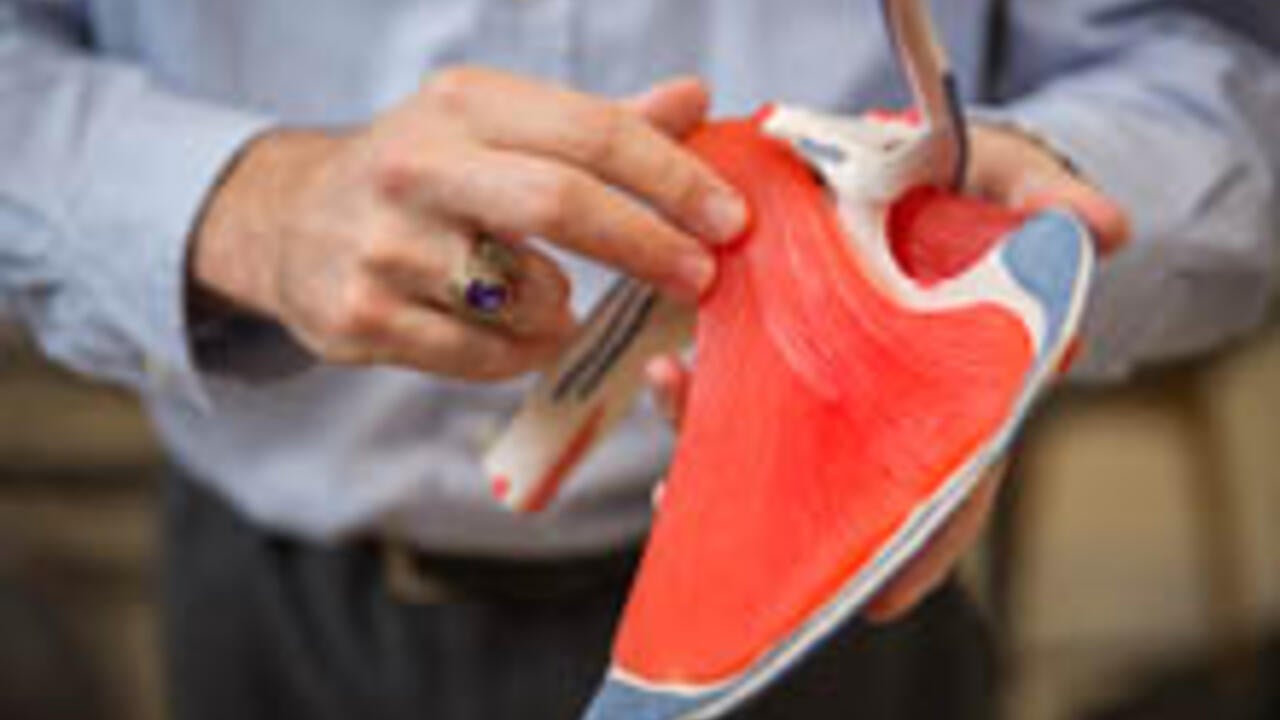
Reducing shoulder injuries in the workplace
Waterloo biomechanics researcher identifies where injury risk is high for automotive assembly line workers

Waterloo biomechanics researcher identifies where injury risk is high for automotive assembly line workers
By Christine Bezruki Applied Health SciencesIt’s not every day the military asks for help. But when they needed to redesign a vehicle to reduce shoulder injuries among soldiers, they reached out to kinesiology Professor Clark Dickerson.

A leading biomechanics researcher, Dickerson uses mathematical algorithms to study shoulder movement and reduce injuries in the workplace—a specialized field that has high profile clients, including North America’s leading automotive manufacturers, lining up for consultation.
Highly flexible, intrinsically unstable
Each year, occupational shoulder injuries affect nearly 10,000 workers in Canada, and account for more than $450 million in disability benefit and compensation payments.
“It’s a concern,” said Dickerson. “Shoulder injuries are typically cumulative. Occupationally, you wouldn’t throw out your shoulder like you would your back. These injuries are a result of muscle fatigue.”
When it comes to the worst jobs for muscle fatigue, automotive assembly lines are near the top of the list.
“The shoulder is highly flexible, but intrinsically unstable,” explained Dickerson. “Overhead tasks on automotive assembly lines can put tremendous strain on workers’ shoulders.”
Called in by major automotive manufacturers, often after a worker has been injured on the job, Dickerson uses specialized biomechanical algorithms to replicate the human shoulder to pinpoint critical parts of tasks where injury risks are high. He then works with engineers to redesign the job to alleviate shoulder demands and decrease the likelihood of re-injury.
As gratifying as it is to correct problems, Dickerson has a bigger goal in mind-- preventing injury before it even happens.
Proactive injury prevention
“Today we are working in a world of reactive ergonomics,” he said. “Even without a specific person to examine, if you know what they need to do in a job, you can predict how they will do it and attempt to design out any preventable health risks in a virtual environment.”
The trouble is getting companies to buy into the idea.
For instance, when the military reached out for help, female soldiers were routinely installing 70 pound batteries to power supply vehicles— and ruining their shoulders doing it.
“The largest strength difference in humans is seen at the shoulders. Women have about two-thirds the shoulder strength of men,” said Dickerson. “With proactive ergonomics, vehicles could have been designed differently right from the beginning.”
On top of improving employee health, there is strong a financial incentive for companies to switch to a more proactive ergonomics design model. Suspending production at an automotive plant to move an assembly line, even as little as one foot, can cost millions of dollars.
“There is powerful financial motivation to eliminate hazardous work, “said Dickerson, “but there should be an ethical one as well.”

Read more
Special issue of Waterloo Magazine celebrates women who lead, and explores equity in education and the workplace

Read more
Waterloo Magazine, Fall 2014: Smarter cars, high-flying students and better sex for those with bad backs

Read more
Here are the people and events behind some of this year’s most compelling Waterloo stories
The University of Waterloo acknowledges that much of our work takes place on the traditional territory of the Neutral, Anishinaabeg, and Haudenosaunee peoples. Our main campus is situated on the Haldimand Tract, the land granted to the Six Nations that includes six miles on each side of the Grand River. Our active work toward reconciliation takes place across our campuses through research, learning, teaching, and community building, and is co-ordinated within the Office of Indigenous Relations.